4 Pollinators Your Garden Can’t Survive Without
Pollination is an important part of the plant'due south life bike that many forms of vegetation wouldn't be today without it. Flowering plants pollinate to make seeds that preserve the species. And while the wind can exist a good, if unpredictable, pollinator, this job usually falls on the shoulders, or rather legs of insects.
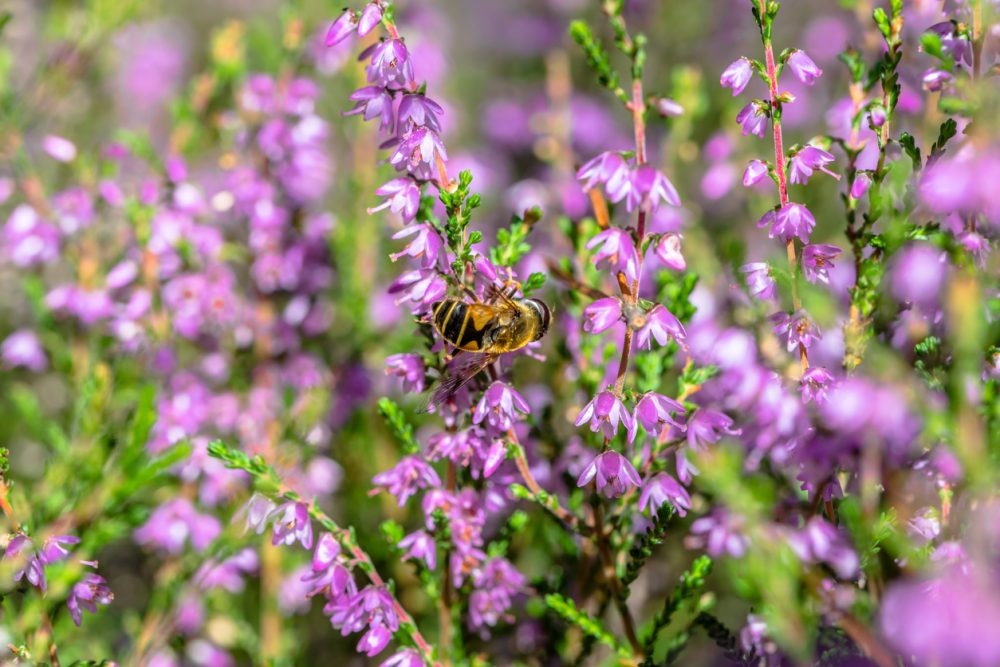
Not all insects are bad for your garden. Withal, not all of them carry the chore of pollinating your flowers with nifty efficiency. The dearest bee and the monarch butterfly are the kickoff names to spring to your mind when you think of diligent pollinators. But did yous know that they're not the only ones that acquit out the job of a establish Eros?
Many insects in the garden take a bad reputation. They're blamed for damage to plants, ruining crops, and killing flowers outright. But that'south not fair for some other good insects that practise a whole lot of good to your garden and little if no, harm whatsoever. Here are some of these often disregarded garden insects and how you can encourage them to visit your garden more than.
Flower Wing
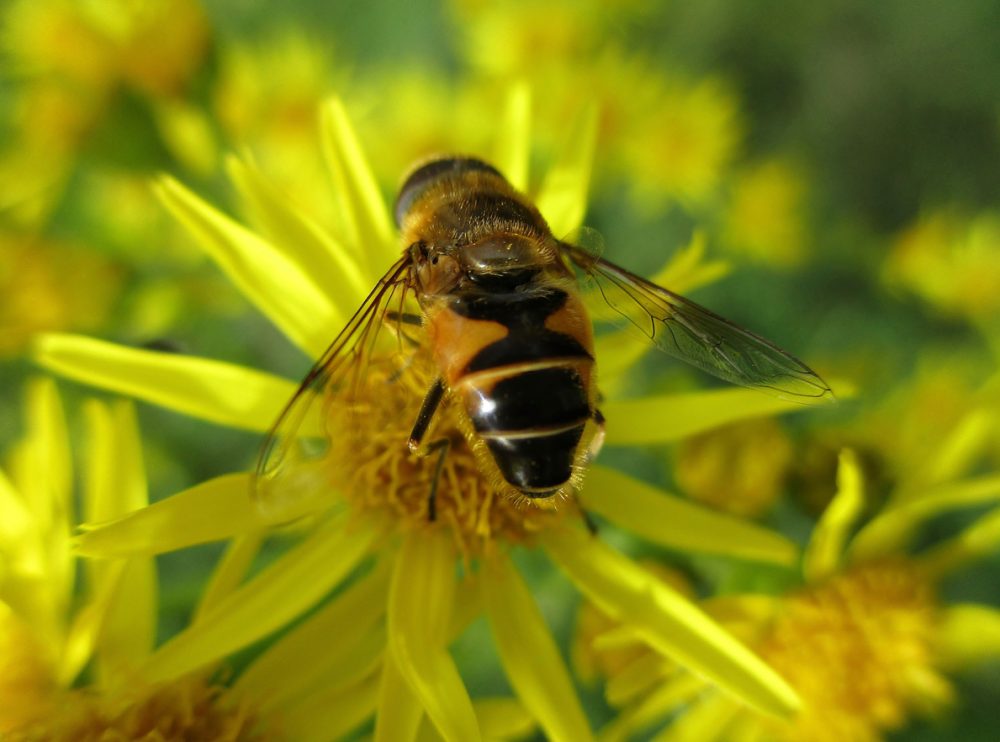
Flies have always had a bad rap. They are abrasive, invasive, and don't have no for an reply. Information technology's nearly like they accept no brain or memory, which is exactly right. The reason business firm flies keep coming back after you swat them is they have no retentiveness. But don't go mistaking the flower fly with the other pesky species of flies that we'd rather meet the back of.
What are they?
Too colorful and do-gooder to be considered flies, the flower wing belongs to the Syrphidae family. With translucent wings, an elongated body, and brown patterns on a bright yellow groundwork, these flies can be easily mistaken for bees. The reason they do that is for the disguise, of class. They don't want predators to spot them and make a quick meal out of them. Merely different bees or wasps, flower flies have two wings rather than four and don't accept a hair waist like a bee or a cinched one like the wasp.
What do they exercise?
Then why are these pretty insects so of import to the health and wellbeing of the plants in your garden? For i thing, their larvae or chow phase is only equally crucial in their garden as the adult flower wing phase. As grubs, they feed on aphids, one of the nastiest and nearly ubiquitous garden pests. This is why many blossom flies lay their eggs on leaves covered with aphids every bit a fix meal for the larvae when they hatch. Think of them as organic pest control that nature provides to y'all free of charge.
How to draw them?
Flower flies are fatigued to flowers the aforementioned fashion bees are. Information technology's right in that location in the name. The adult insects feed on nectar and pollen. They brand their daily rounds visiting and pollinating as many flowers in as many gardens equally they tin can. So naturally, if you want them to pay you lot a visit and spread their good work around your plants, and so continue as many flowering plants equally yous can in the garden. They're too attracted to plants covered in aphids. So it's a win-win situation for everyone involved, except for the aphids, of course.
Mud Dauber Wasp
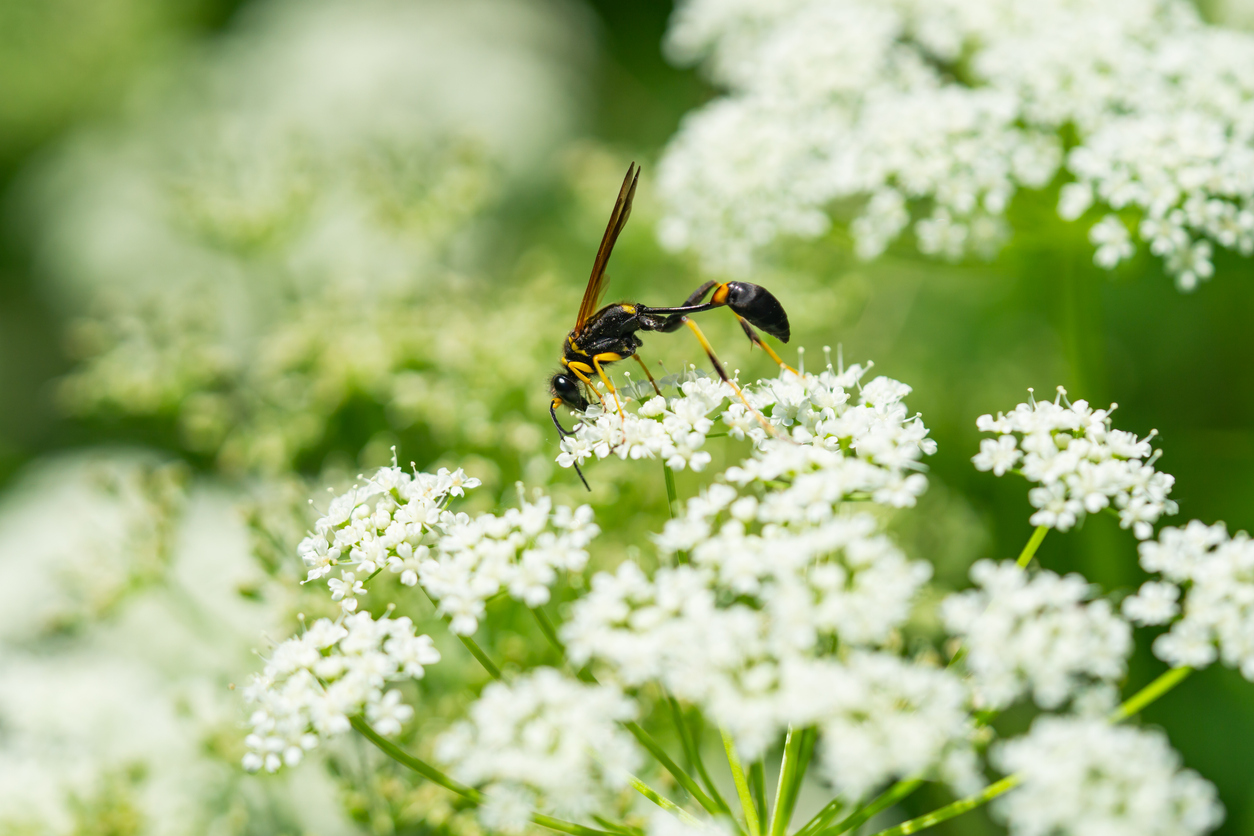
Sceliphron caementarium is the scientific proper noun for this common wasp. Just unlike other hateful and stinging wasps, there's null common well-nigh the mud dauber wasp. With a sculpted waist that is barely visible, this wasp rarely stings. Mainly because information technology doesn't accept a hive to protect, nor does it agree grudges for any reason. In other words, if you see the mud dauber wasp in your garden, don't think of ways to eliminate it. Instead, retrieve of how to brand it drop by more often.
What are they?
Unlike other wasps, the mud dauber wasp is a solitary insect. Information technology rarely spends whatever time with some other of its species except for mating. This is a architect wasp. It crafts a tiny nest out of the mud. The nest is round in shape and resembles an ancient hamlet congenital out of adobe. Y'all might find these nests on the wall in your lawn or on the shed.
What do they practice?
Autonomously from pollinating flowers, mud dauber wasps do your plants a great service going after aphids and spiders. While their smooth bodies don't behave as much pollen as the hairy bees, they nonetheless enjoy the juicy aphids and get after spiders like at that place'south no tomorrow. So instead of resorting to chemic pesticides, the mud dauber wasp does a make clean job with zilch footprints on the surround.
How to draw them?
Since nectar and pollen concenter mud dauber wasps, then offering them enough of their favorite food should act every bit an open up invitation for them to come and cleanse your garden of all the bad insects. If they like your garden so much, they might even build their mud homes in the vicinity and visit your flowers every day as long equally they are in flower.
Blackness Ant
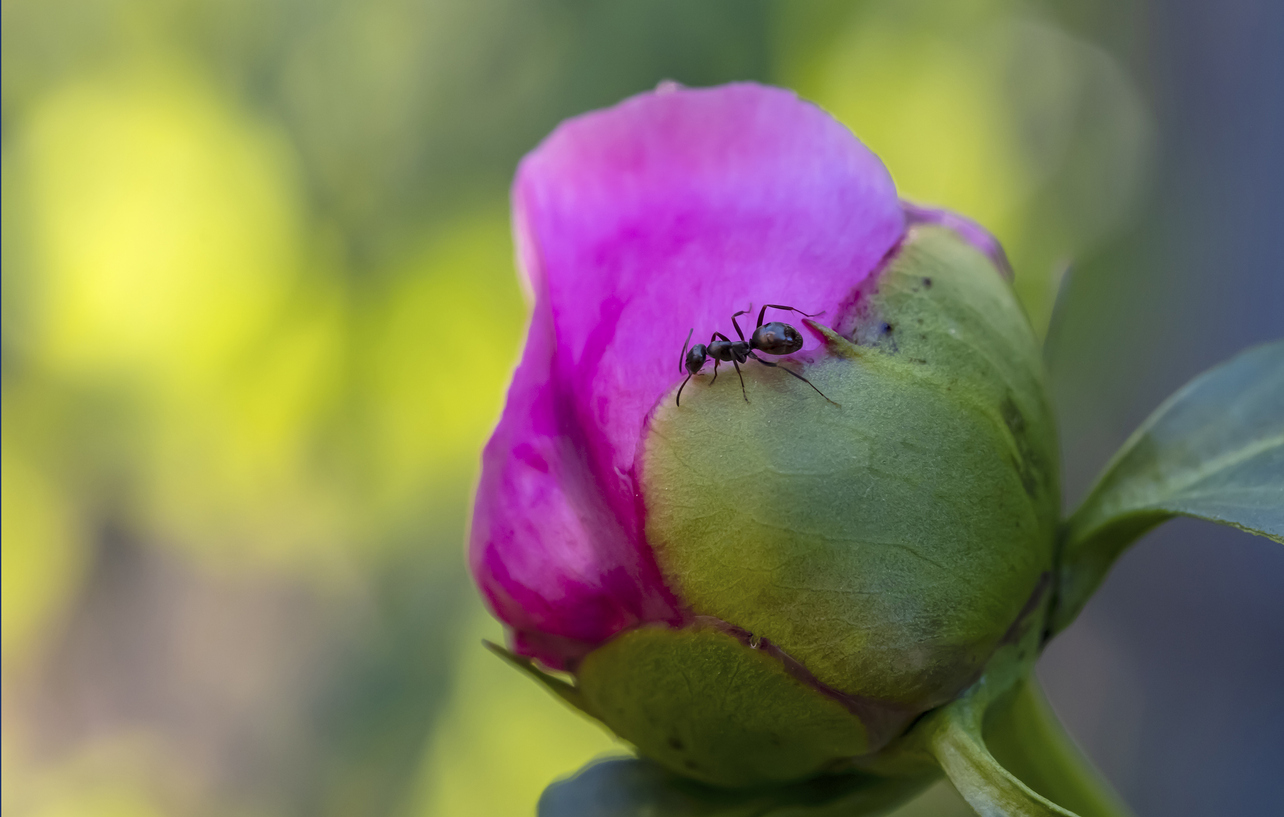
Just similar flies, ants have had a testy relationship with humans. They live in big social groups and swarm whatever source of food like a famished ground forces. While the fire ants are reviled for their aggressive behavior, black ants are the exact opposite. They don't sting and live in peace, minding their own business organisation for the most function.
What are they?
Blackness ants are just your typical ants that come up in blackness. They can coexist with plants in a symbiotic relationship where they do no harm to the plants and instead assistance them grow and flourish. Earlier y'all recall of calling pest command to manage the colony of black ants in your garden, think of all the expert work they exercise.
What do they do?
Just like all other insects that crave the succulent nectar of the flowers, blackness ants assist the flowers pollinate in the process. Simply they don't carry pollen per se. Instead, they swarm the flower in big groups that deter other flower-eating insects from approaching that flower and dissentious information technology. This applies to peonies in item.
Black ants practice pollinate other veggies. Pumpkins are one of the plants that adhere their pollen to the legs of the ants as they scurry in and out of the pumpkin flowers. So if you have pumpkin flowers just no ants, chances are yous won't have pumpkin fruits this twelvemonth. Not unless bees dive in and do that task.
How to depict them?
Found as many pumpkins, marigolds, and Green-and-golds every bit yous can. Dissimilar other insects, black ants don't wing, which ways they need to have low-hanging flowers near the footing that they can climb and feed on their nectar.
Avoid using chemical pesticides that would impale the black ants. Besides, try non to alluvion their homes or annihilate them. Blackness ants practice a great service to the environment, and it would be a shame to see your pumpkin plants die out without giving you a good crop. Halloween wouldn't be the same that yr.
Goldenrod Soldier Beetle
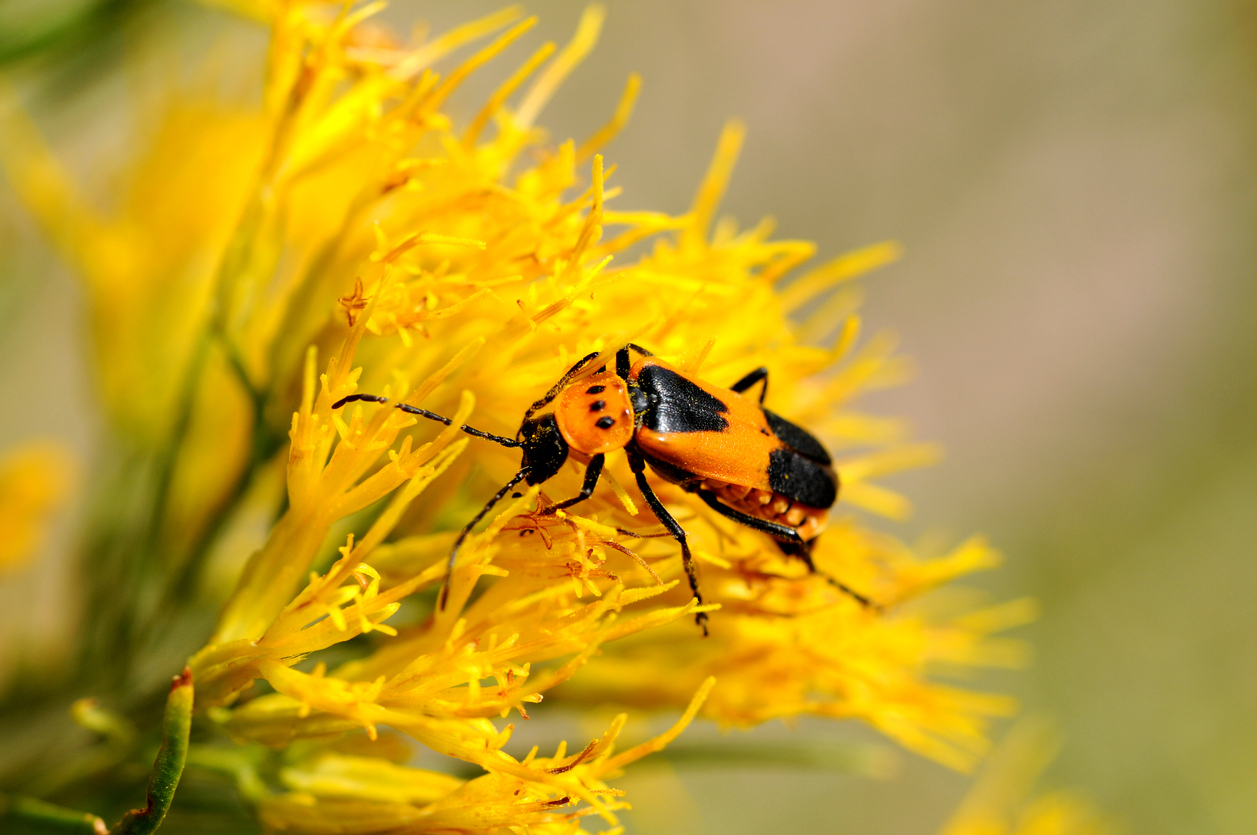
The scientific proper name for this unique insect is Chauliognathus pennsylvanicus, but information technology's only called the goldenrod soldier protrude. That's because goldenrods are its favorite hangouts. However, you might see it lurking on other flowers.
What are they?
Although they have bright and cheerful colors, the goldenrod soldier beetles are, in fact beetles. Just they don't cause any harm to animals, plants, or humans. They don't seize with teeth, sting, or spray you lot with a nasty chemical. In fact, they're as harmless every bit the black emmet. Their larvae don't feed on plants either. Instead, they live in the soil and feed on small insects.
What do they practice?
When you expect at the scraggy legs of the goldenrod soldier beetle, call up of how many thousands of pollen can each leg carry every bit information technology crawls from one flower to the adjacent. They eat the nectar and pollen but mostly conduct more than pollen on their bodies than they swallow.
In addition, these soldiers go after other insects that eat on your plants and ruin your blooms. From caterpillars to aphids and insect eggs, they have a voracious appetite and won't residue until they take devoured the last insect in your garden. You couldn't ask for a amend soldier fighting the good fight on your behalf.
How to draw them?
Goldenrod soldier beetles visit gardens in the fall. They are mainly attracted to flowers that offer enough of nectar and pollen. And so fall bloomers such as anise hyssop, goldenrods, milkweed, Queen Ann's lace, rattlesnake master, and of grade sunflowers are natural magnets for this soldier beetle. In fact, sunflowers are the best describe for this beetle since it helps it stock upwardly on nutrient for the winter months.
Source: https://www.diys.com/pollinators/
Post a Comment for "4 Pollinators Your Garden Can’t Survive Without"